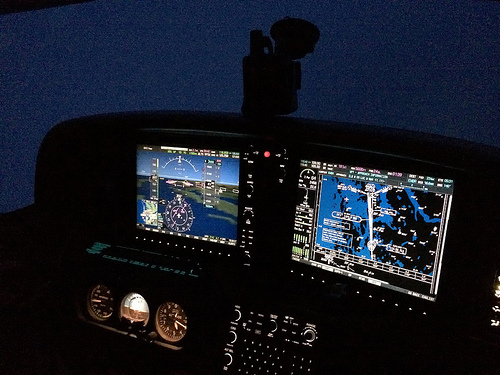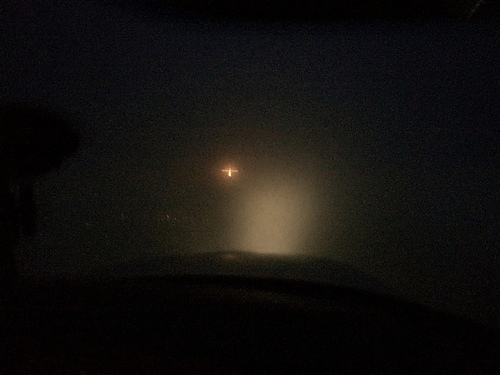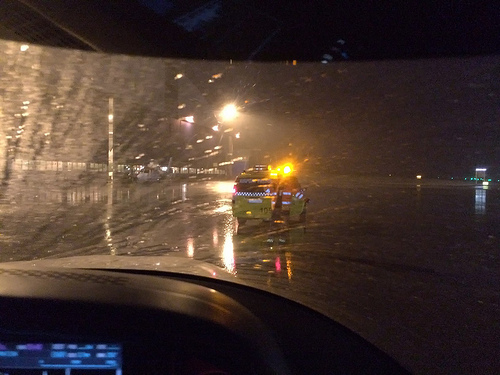Even with perfect weather an engine failure would mean disaster.
Says it all for me. But thanks for the beautiful photographs, and thanks for the open mind!
I’ve only flown ONE SINGLE night … it’s a requierement to have the night rating first for the german IFR. We flew the complete 5 hours in one night and practiced approaches at a former military airbase in eastern germany. It was pit black, no horizon, no houses, no lights… only the runway lights, like in a computer game… very strange experience. I remember how I was thinking about a possible engine failure. There would have been no chance to do make a controlled landing. On the way back the moon came out and I could at least see some rivers… thin silver ribbons through the black landscape. I think I would have tried to land on one of those, just in case …
Unfortunately my home base has no night flying and so I never did it again.
My last night flight was into the night Tuesday last week. It was fun.
Coventry has no centre line lighting which can be a pain.
My taxi light blew, so time for LEDs I think.
I was impressed with Log Ten Pro as it automatically put in night time and a night landing.
remember how I was thinking about a possible engine failure. There would have been no chance to do make a controlled landing.
Alexisvc, with your Cirrus you have the option of the chute. That gives you a way out in case of an engine failure.
My taxi light blew, so time for LEDs I think.
We used both the taxi+landing light for taxiing. It was so dark that you could barely see the taxiway.
The DA40 has the taxi/landing light at the end of the left wing. I think it is much better to have the landing light in/under the nose, as it will shine on the centerline.
Some more thoughts on night flying after our recent experience:

I think it is much better to have the landing light in/under the nose, as it will shine on the centerline.
I heard it’s somewhat beneficial to have the lights in the wing – wing lights are further away from the vibrations of the engine & bulbs tend to last longer. (or so the argument goes)
What I have found though, is that standard lights on most light aircraft (pardon the pun) are woefully inadequate for navigating anywhere on the ground. There’s a lot of STCs in the market for retrofit lights…
A Panasonic Lumix FT2 compact digital, on movie and night mode, held out of the opening in a Pa28. As regards landing light position, the worst is close in on the left wing, so it illuminates the back of the prop.
I have only about 25hrs at night – due to
The TB20’s LH wingtip cluster is poor for doing right turns on the taxiway. My recently fitted LEDs are much brighter but I have not yet tested them at night. One US pilot put a cluster in the RH wing also (337 Field Approval – a big job in that case; I saw the documentation) and that is a great solution but it’s a lot of work. That link above also mentions another possible solution in the form of illuminated wingtips, but the late-GT wingtips are very pricey.
Re cameras, one really needs a recent model DSLR. A couple of years ago a new sensor came out from Sony. The first camera with it was the Pentax K5, which I have, and you get pretty good shots at ISO 50000+. I think every major name is using it now.
Some night flying pictures of the last week
Enroute from Rotterdam to Bergen (Norway) with on the right screen the ILS procedure depicted of the landing runway at Bergen. I am currently flying downwind. Next pictures show how I close into the runway and finally the follow me car to take me to the taxi-stand.




Great weather at your destination. 
Yes, the weather was at the minima.